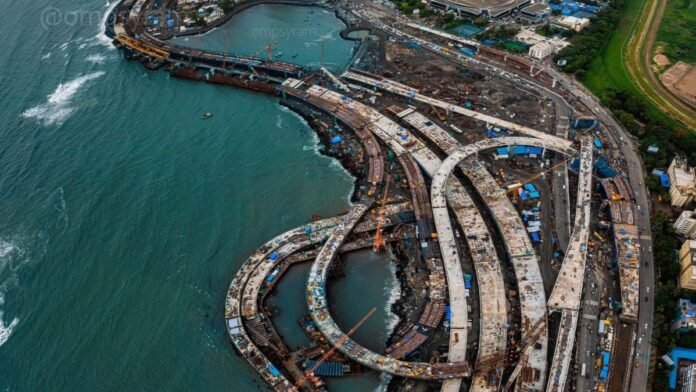Mumbai Coastal Road Set to Open in February, Enhancing Travel and Reducing Pollution
The Mumbai Coastal Road Project is expected to be fully open to the public by February 2025. The project, which promises to ease congestion and reduce pollution, was officially marked by the inauguration of the North Channel Bridge, connecting the Coastal Road with the iconic Worli-Bandra Sea Link. Maharashtra Chief Minister Devendra Fadnavis, accompanied by Deputy Chief Minister Eknath Shinde, presided over the event, which also saw the opening of three inter-modal crossings aimed at benefiting commuters from areas such as Worli, Prabhadevi, Lower Parel, and Lotus Junction.
This ambitious project, which has been in development for several years, will significantly ease traffic flow along one of Mumbai’s most congested corridors. CM Fadnavis expressed his gratitude to the teams involved in the project, thanking engineers, BMC staff, and contractors for their hard work. “With 94% of the work completed, the Coastal Road will be fully open to Mumbaikars upon the completion of the Prabhadevi Connector in February. The Coastal Road will significantly reduce travel time for Mumbaikars and provide much-needed relief from pollution,” he wrote in a post on social media. The Mumbai Coastal Road will be operational from 7:00 AM to 12:00 midnight daily, with traffic beginning on all roads from January 27, 2025. In the period from March to December 2024, over 50 lakh vehicles have used the Coastal Road route, with a daily average of 18,000 to 20,000 vehicles, indicating the substantial demand and benefit for Mumbaikars.
Details of the Bridge and Project Specifications
The North Channel Bridge, which is central to the project, stretches 827 metres in length, including a 128-metre access road and 699 metres above the sea. The bridge features a “Bo Arch String Girder,” which measures 143 metres in length, 27 metres in width, and 31 metres in height, weighing an impressive 2,400 metric tonnes. The construction of this bridge marks a key milestone in the ongoing development of the Mumbai Coastal Road. The project itself, which has an estimated cost of ₹12,721 crore (excluding rehabilitation, acquisition, and landscaping costs), spans a total of 10.58 km. The road includes twin tunnels, each 3.45 km long, with an internal diameter of 11 metres, and will feature three lanes in each tunnel. This is part of an eight-lane design to accommodate the increasing number of vehicles in one of the busiest urban centres in India.
Impact on Traffic and Pollution
The completion of the Coastal Road is expected to provide significant relief for commuters across the city. By directly connecting key areas like Worli, Prabhadevi, and Lower Parel, it will drastically cut down travel times, especially for those who rely on the congested Western Express Highway. It also has the added benefit of improving air quality by providing a smoother, faster route, reducing vehicle emissions and traffic-related pollution. Maharashtra’s government has also highlighted the importance of this project for road safety. In 2024, Mumbai saw a total of 511 road accidents, with many of them occurring on national and state highways. However, the new Coastal Road, designed to ease traffic congestion and improve connectivity, is expected to reduce the number of accidents, providing safer commutes for residents.
Future Plans and Road Safety
Officials have already started taking steps to ensure better road safety on the highways. In light of recent accidents on the Mumbai-Agra Highway, measures are being put in place to address issues such as rash driving, speeding, and improper use of the highway by motorists. Awareness camps about traffic rules are being organised, with increased enforcement of traffic regulations to reduce accidents and fatalities. The full opening of the Mumbai Coastal Road Project marks a turning point for the city’s infrastructure. It is poised to not only provide a smoother commute but also contribute to better air quality, making it an essential part of Mumbai’s urban future. The integration of such large-scale infrastructure projects reflects the city’s ongoing efforts to modernise and meet the demands of its growing population.



